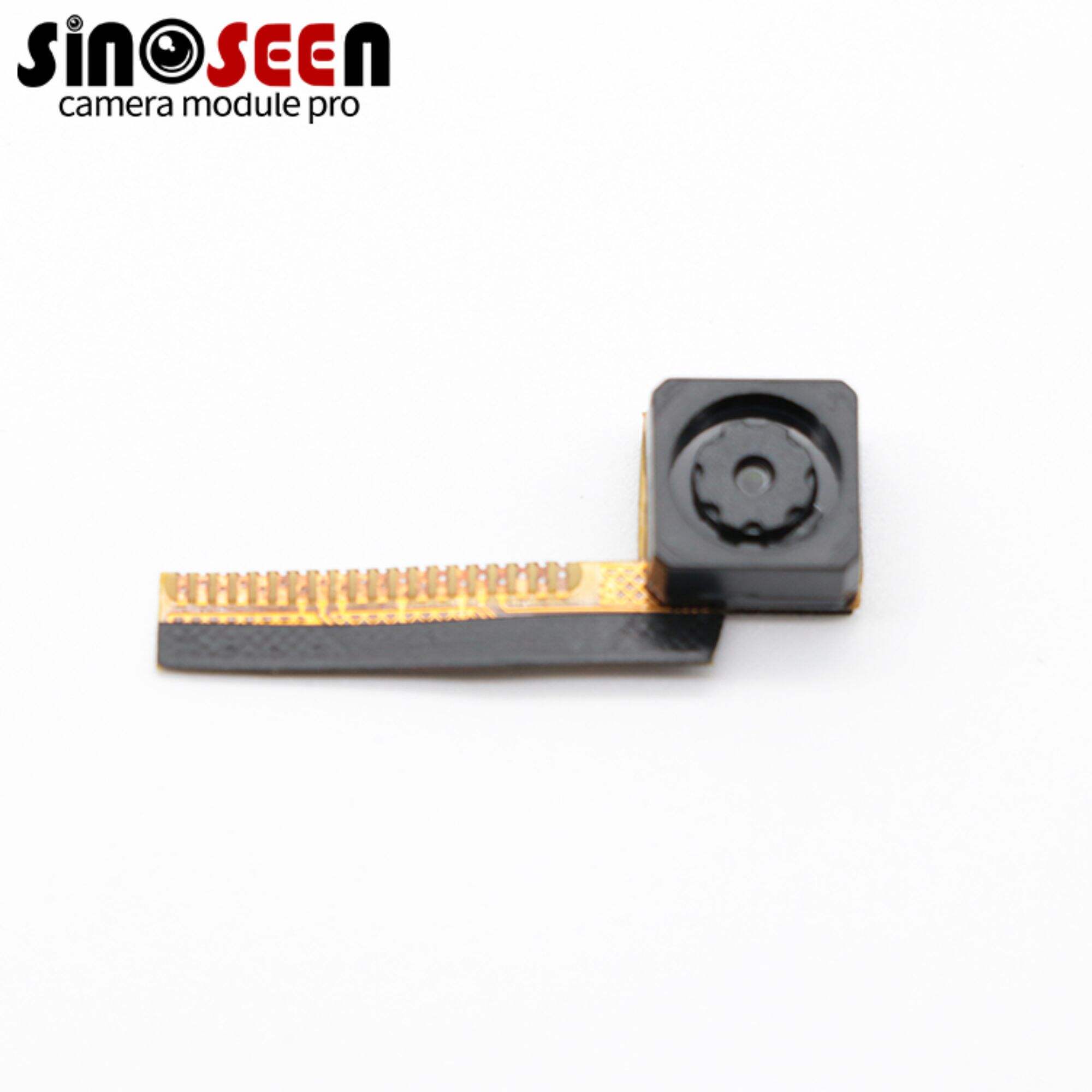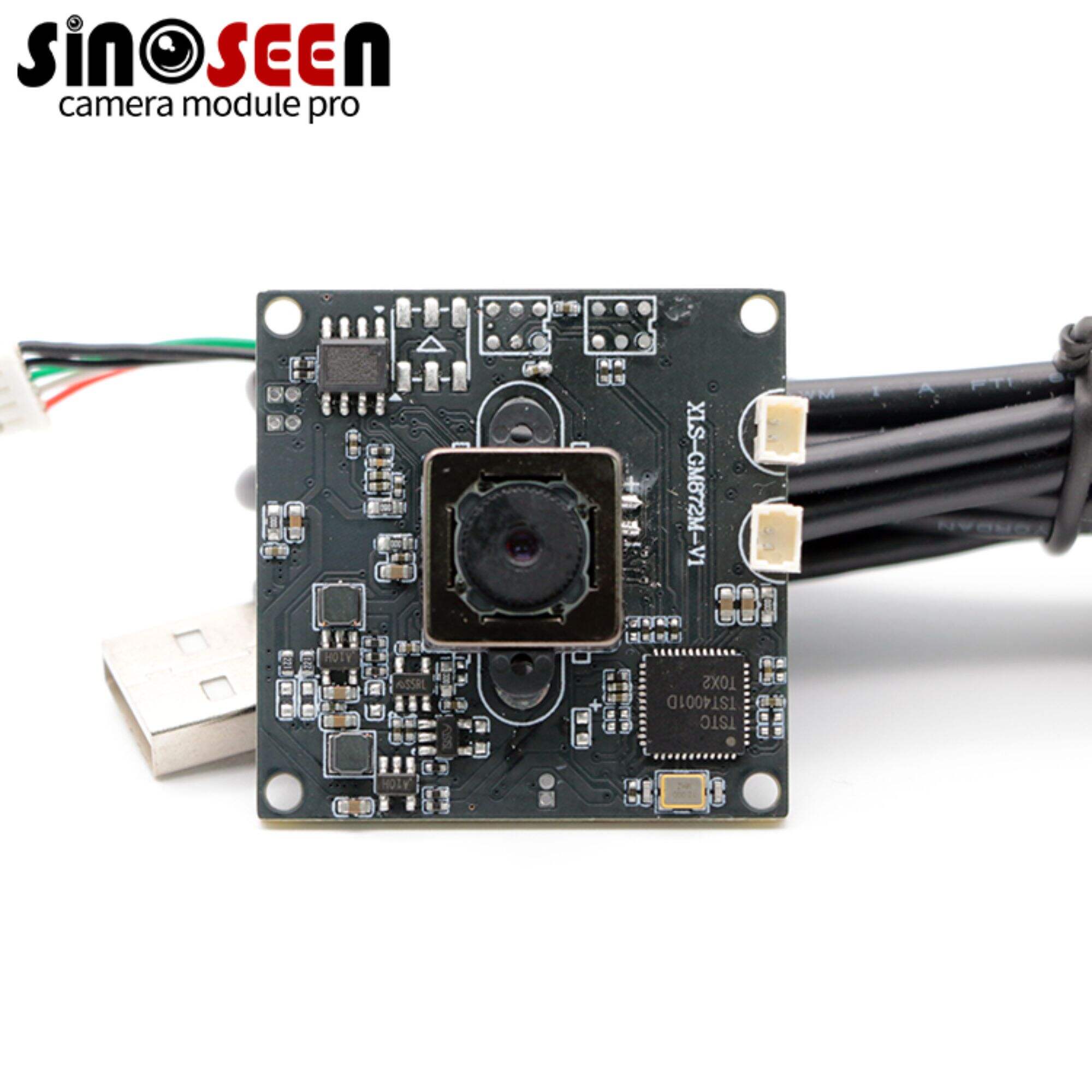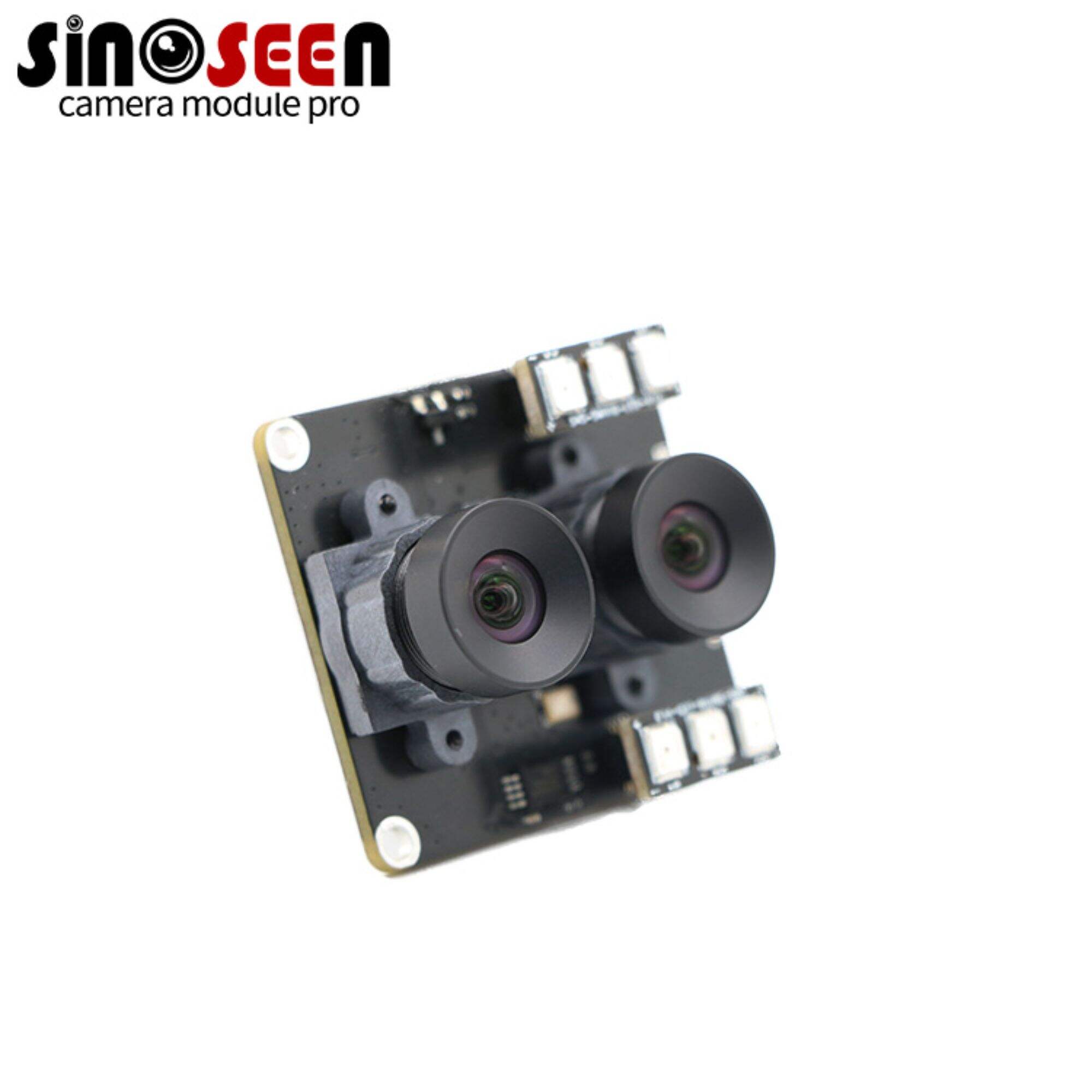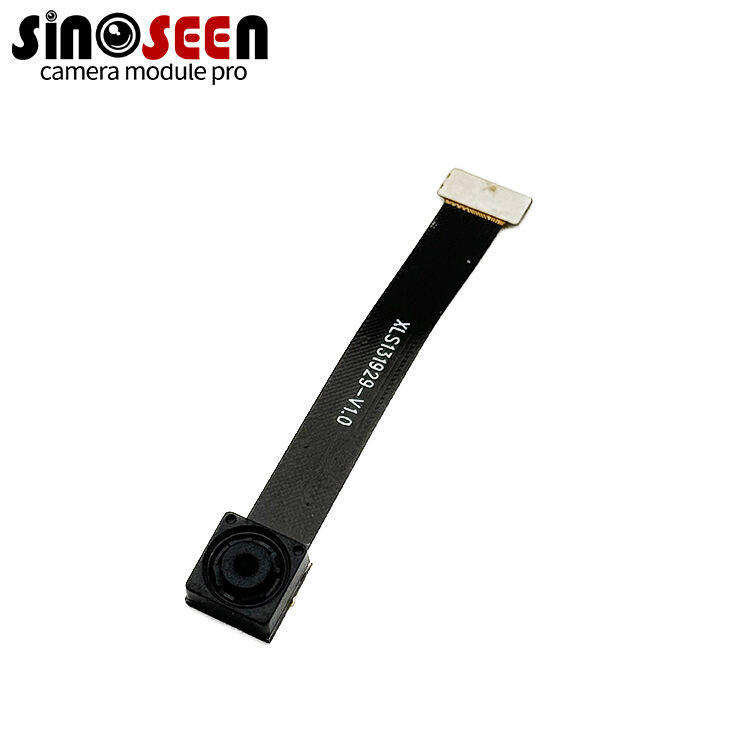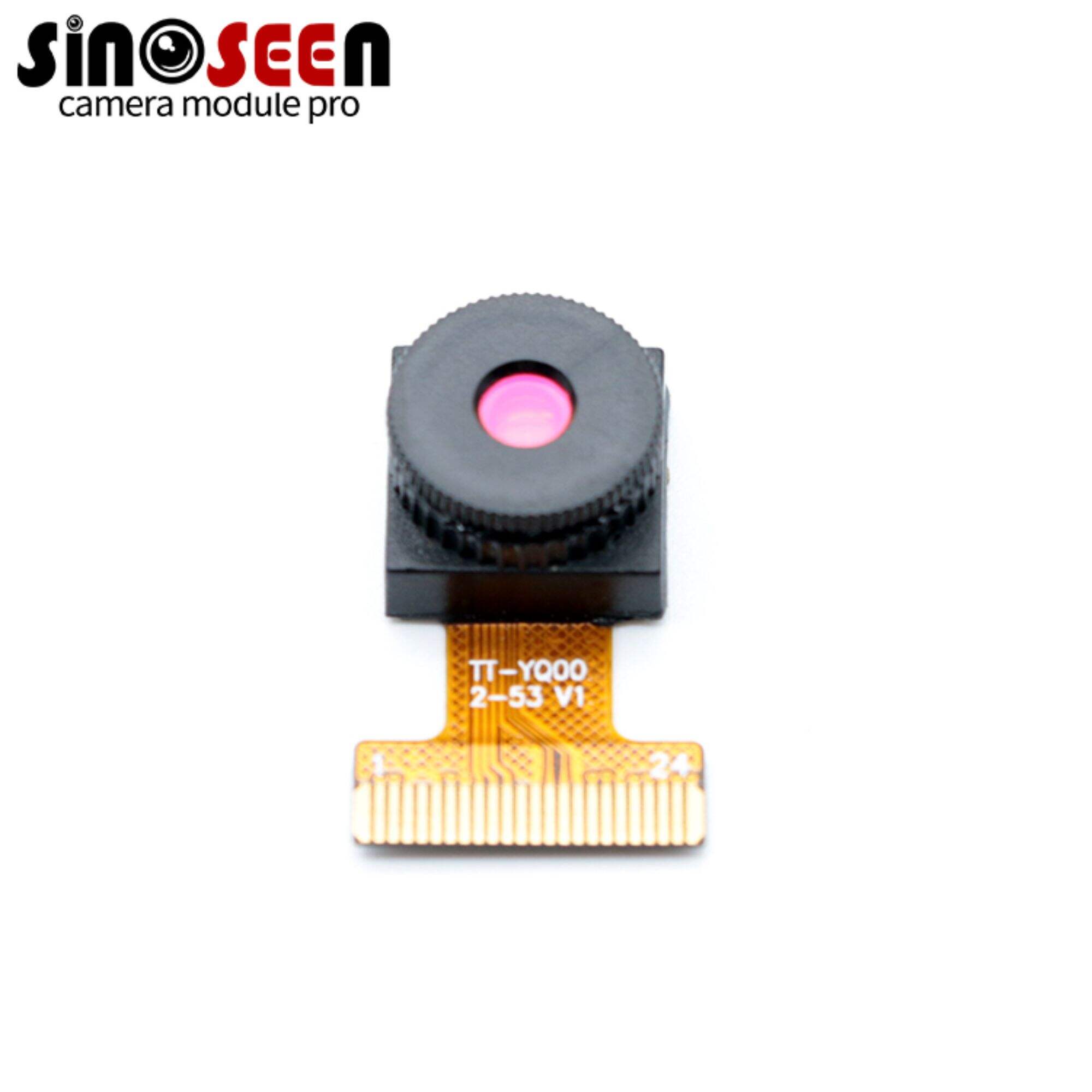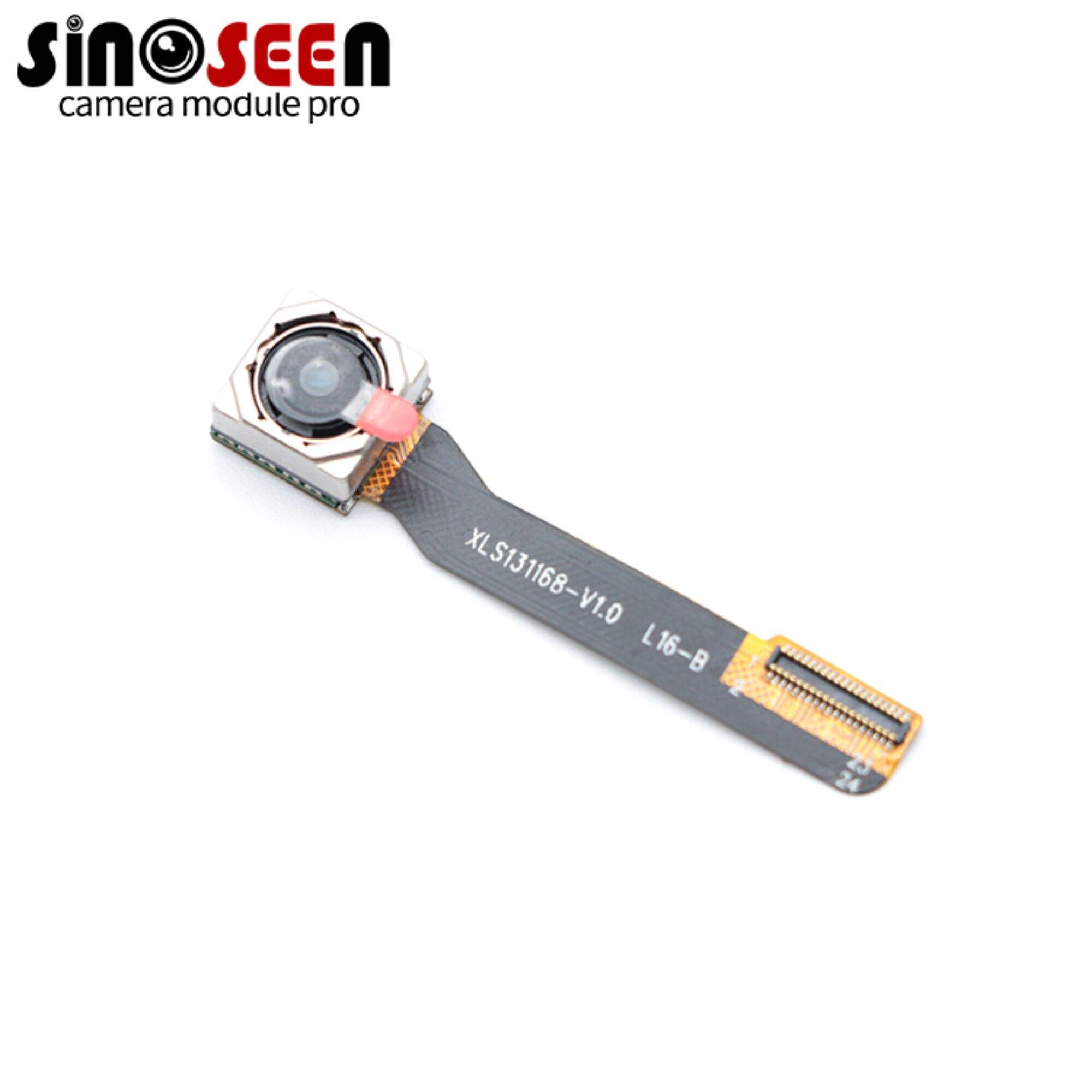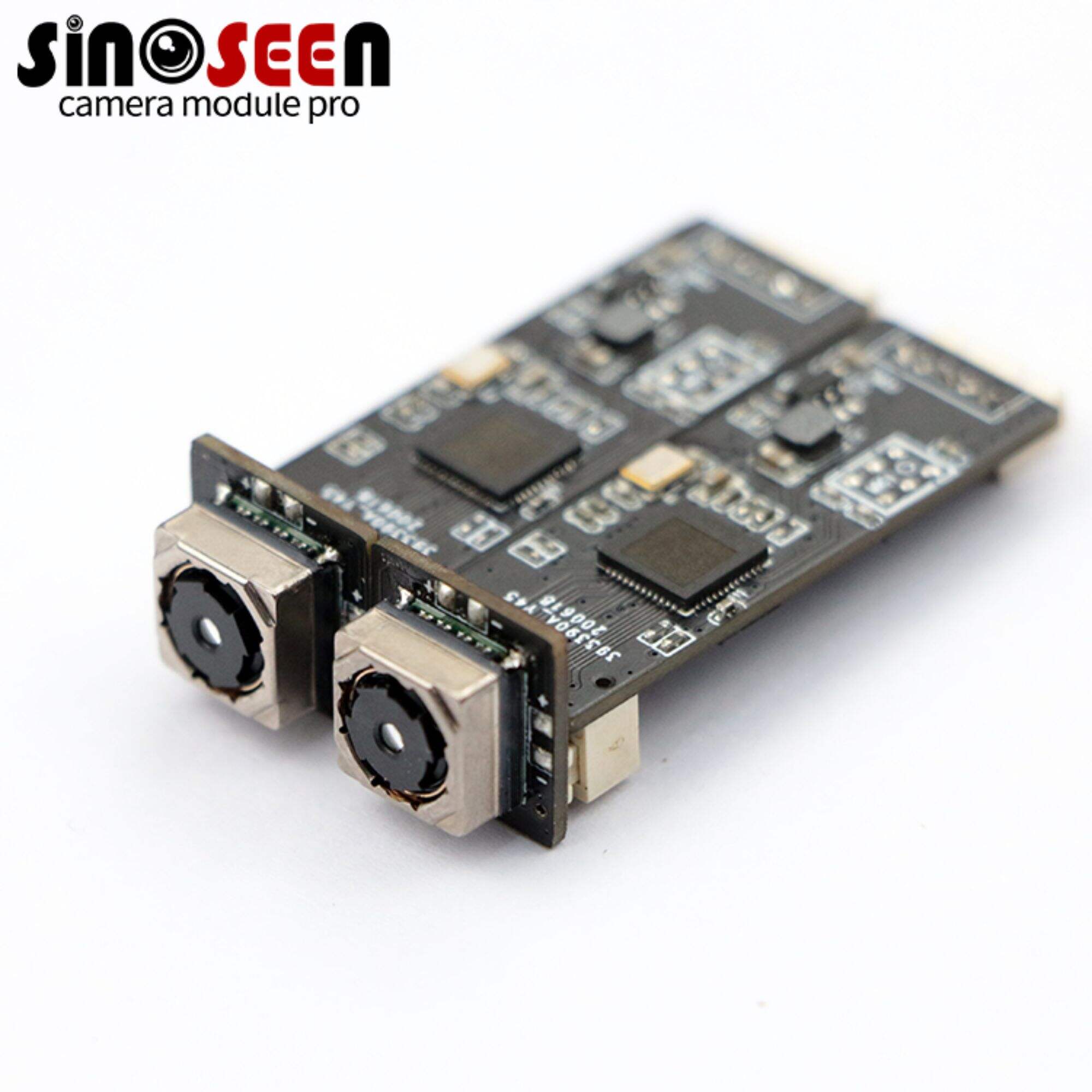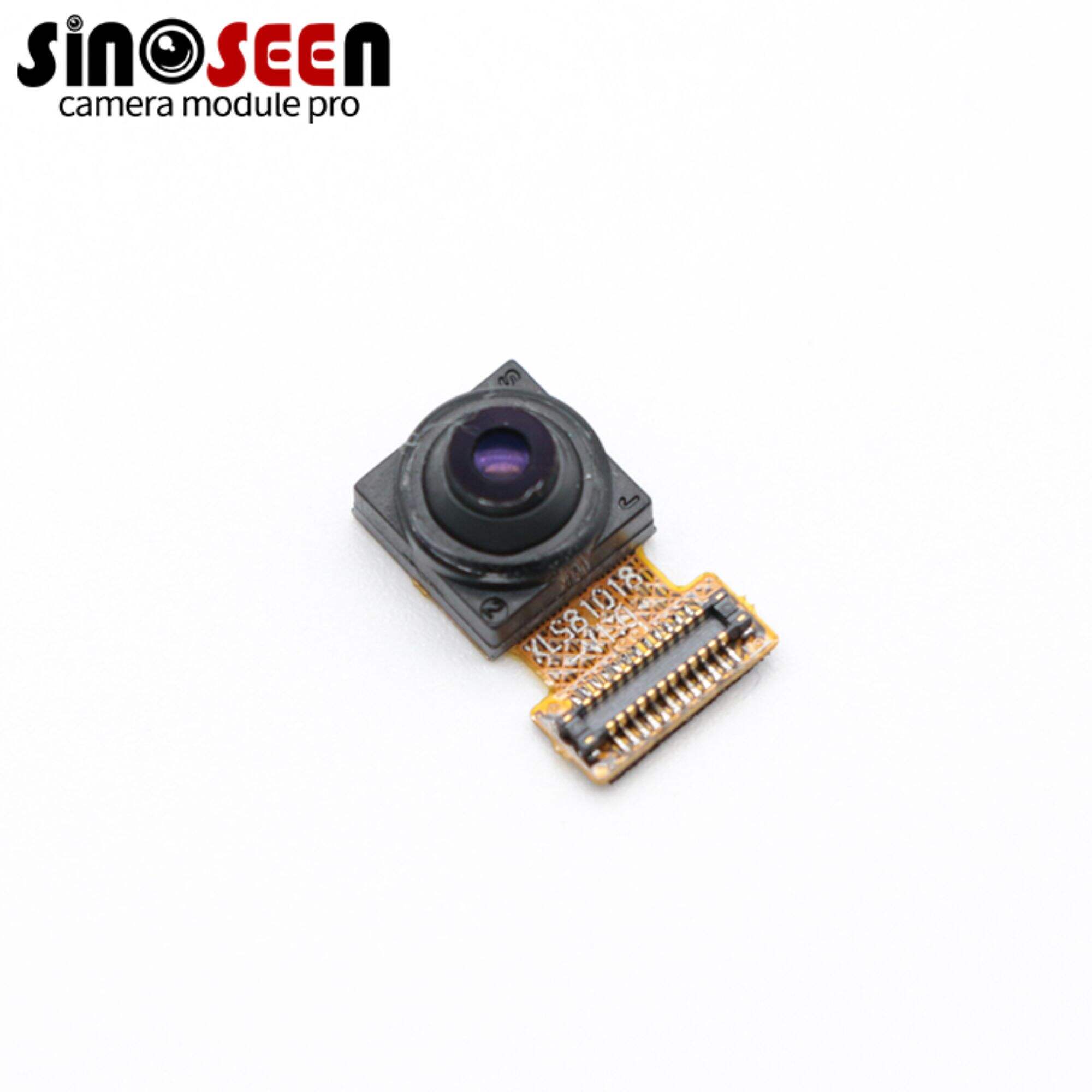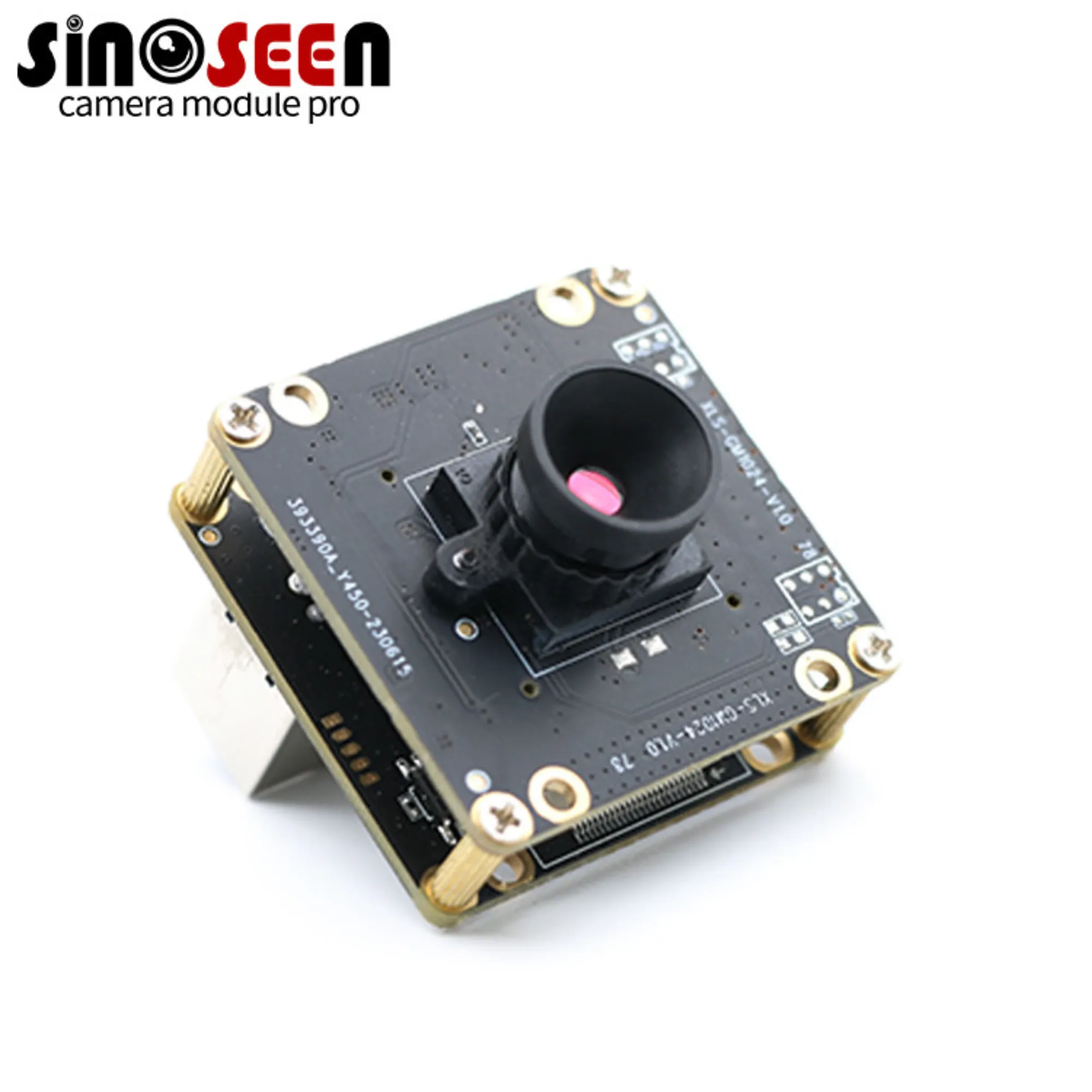8 ความละเอียดเว็บแคมที่ดีที่สุดสำหรับการประชุมผ่าน Zoom: วิธีเลือก?
เหตุใดความละเอียดของกล้องจึงมีความสำคัญอย่างมากต่อการทำงานร่วมกันจากระยะไกล
ในยุคหลังการระบาดใหญ่ การทำงานจากระยะไกลและการประชุมออนไลน์ได้กลายเป็นเรื่องปกติ ไม่ว่าจะเป็นการเจรจาทางธุรกิจกับลูกค้า หรือการสื่อสารด้านเทคนิคภายในทีม เทคโนโลยีของเว็บแคมมีผลโดยตรงต่อคุณภาพของข้อมูลที่เราสื่อสาร ความละเอียดของกล้อง ซึ่งเป็นพารามิเตอร์สำคัญ จะส่งผลต่อความชัดเจนของภาพ รายละเอียด และคุณภาพของภาพโดยรวม ซึ่งส่งผลโดยตรงต่อภาพลักษณ์เชิงมืออาชีพและประสิทธิภาพในการสื่อสาร สำหรับวิศวกรด้านวิชันเทคโนโลยี (Embedded Vision Engineers) การเข้าใจและการเลือกความละเอียดที่เหมาะสมที่สุด ไม่ใช่เพียงทักษะด้านเทคนิคอย่างเดียว แต่ยังเป็นขั้นตอนสำคัญที่นำไปสู่ความสำเร็จของโครงการ
การวิเคราะห์อย่างละเอียดเกี่ยวกับความละเอียดของเว็บแคมหลัก 8 แบบ
การเลือกเว็บแคมที่ดีที่สุดสำหรับการประชุมผ่าน Zoom เริ่มต้นด้วยการเข้าใจมาตรฐานความละเอียดที่แตกต่างกัน เราจะอธิบายทีละแบบ ตั้งแต่ความละเอียดมาตรฐานไปจนถึงความละเอียดระดับอัลตราไฮเดฟิเนียน (Ultra-High Definition) และเจาะลึกถึงปัจจัยทางเทคนิคที่อยู่เบื้องหลังความละเอียดแต่ละแบบ
- VGA (640x480)
- WVGA (800x480) & SVGA (800x600)
- HD (1280x720)
- Full HD (1920x1080)
- WUXGA (1920x1200)
- QHD (2560x1440)
- UHD (3840x2160)
มาดูความละเอียดของกล้องต่างๆ เหล่านี้ทีละรายการกัน
VGA (640x480)
ในฐานะหนึ่งในมาตรฐานการสื่อสารผ่านวิดีโอรุ่นแรก VGA ให้ภาพที่หยาบและเป็นเม็ด คล้ายกับหน้าจอโทรทัศน์ยุคเก่า ซึ่งให้เพียงภาพกรอบเบลอๆ ในตลาดเว็บแคมปัจจุบัน ความละเอียดนี้กลายเป็นล้าสมัยเกือบทั้งหมด มักพบได้ในอุปกรณ์ระดับล่างที่เน้นต้นทุนต่ำ เป็นการใช้งานกล้องวิดีโอแล้ว ประสิทธิภาพของมันไม่สามารถตอบสนองความต้องการยุคใหม่ได้อีกต่อไป
การใช้งานเว็บแคม VGA:
การเฝ้าระวังพื้นฐาน: เหมาะสำหรับการตรวจสอบความปลอดภัยอย่างง่าย ที่ไม่ต้องการรายละเอียดภาพมาก เช่น การตรวจสอบสถานะการออนไลน์ของอุปกรณ์
ความเข้ากันได้กับอุปกรณ์รุ่นเดิม: ในบางกรณีที่ฮาร์ดแวร์ระบบประชุมทางไกลหรือระบบฝังตัวรุ่นเก่ายังคงถูกใช้งานอยู่ VGA คือรูปแบบเดียวที่รองรับได้
การประยุกต์ใช้ใน IoT: ให้บริการสตรีมมิ่งวิดีโอสำหรับโครงการ IoT ที่มีข้อจำกัดด้านพลังงานและการส่งข้อมูลอย่างเข้มงวด

ข้อควรระวัง:
คุณภาพของภาพต่ำ: ไม่สามารถจับรายละเอียดใบหน้าและตัวอักษรได้ ทำให้ไม่เหมาะสำหรับการสื่อสารที่ต้องการภาพที่ชัดเจน
ขาดความเป็นมืออาชีพ: การใช้ความละเอียดนี้อาจส่งผลเสียต่อภาพลักษณ์เชิงมืออาชีพของคุณอย่างรุนแรง
การประยุกต์ใช้งานจำกัด: ไม่สามารถตอบสนองข้อกำหนดด้านคุณภาพภาพขั้นต่ำของซอฟต์แวร์ประชุมทางไกลยอดนิยม
WVGA (800x480) & SVGA (800x600)
รูปแบบความละเอียดนี้ทั้งสองแบบมีความคมชัดสูงกว่า VGA เล็กน้อย โดยทั่วไปจะพบได้ในโมดูลเว็บแคมของอุปกรณ์ฝังตัวระดับล่างหรือเฉพาะทาง แม้ว่าคุณภาพของภาพจะดีขึ้นเล็กน้อยเมื่อเทียบกับ VGA แต่ความชัดเจนยังคงมีข้อจำกัดอยู่ รูปแบบเหล่านี้มีอยู่เพื่อให้สามารถใช้งานวิดีโอพื้นฐานได้ในต้นทุนที่ต่ำมาก
การใช้งานเว็บแคม WVGA และ SVGA:
ผลิตภัณฑ์สำหรับผู้บริโภคราคาประหยัด: ติดตั้งในแท็บเล็ตหรือของเล่นสำหรับเด็กที่มีราคาถูก เพื่อใช้ในการโทรภาพแบบง่ายๆ
ระบบฝังตัว: ใช้เป็น โมดูลกล้องแบบเรียลไทม์ ในอุปกรณ์อุตสาหกรรมหรืออุปกรณ์ระบบอัตโนมัติ ที่มีพลังประมวลผลจำกัดและต้องการคุณภาพภาพในระดับต่ำ
การสื่อสารด้วยวิดีโอพื้นฐาน: ใช้สำหรับเครื่องติดต่อสื่อสารด้วยวิดีโอแบบง่ายระหว่างพนักงาน ในเครือข่ายภายในที่มีแบนด์วิธจำกัด

หมายเหตุ:
ไม่เหมาะสำหรับแพลตฟอร์มหลักทั่วไป: ความละเอียดทั้งสองระดับนี้ไม่สามารถให้ภาพลักษณ์ที่ดูเป็นมืออาชีพในงานประชุมทางไกลที่ใช้กันอย่างแพร่หลายอีกต่อไป
สูญเสียรายละเอียด: คุณภาพของภาพยังคงเบลอ ทำให้ยากต่อการนำเสนอแผนผัง เอกสาร หรือรายละเอียดผลิตภัณฑ์อย่างชัดเจน
ล้าสมัยทางเทคโนโลยี: ในวงการเทคโนโลยีภาพที่เปลี่ยนแปลงอย่างรวดเร็ว กล้องเหล่านี้กำลังถูกแทนที่อย่างค่อยเป็นค่อยไปด้วยตัวเลือกที่มีความละเอียดสูงกว่า
HD (1280x720)
ความละเอียด 720p ซึ่งมักเรียกว่าความคมชัดสูง (HD) เป็นมาตรฐานระดับเริ่มต้นสำหรับเว็บแคมยุคใหม่ ซึ่งสร้างจุดสมดุลระหว่างคุณภาพวิดีโอที่ยอมรับได้และราคา ทำให้เป็นตัวเลือกที่ผู้ใช้จำนวนมากนิยม แม้ว่าจะไม่ให้ความชัดเจนเท่ากับความละเอียดที่สูงกว่า แต่ก็เพียงพอสำหรับสถานการณ์ทั่วไปและไม่ต้องการความละเอียดสูงมาก ทำให้เป็นทางเลือกที่คุ้มค่ากว่าเมื่อเปรียบเทียบกับกล้อง 1080p
กรณีการใช้งานเว็บแคมแบบ HD:
การเรียนรู้จากระยะไกล: เหมาะสำหรับนักเรียนและครูที่เข้าร่วมเรียนออนไลน์ ช่วยหลีกเลี่ยงการใช้แบนด์วิธมากเกินจำเป็น และรับประกันการเรียนการสอนที่ราบรื่นและเข้าถึงได้ง่าย
การประชุมประจำวัน: เหมาะสำหรับการประชุมทีมแบบไม่เป็นทางการ หรือการอัปเดตเป็นประจำ โดยคุณสามารถรักษาการเชื่อมต่อได้โดยไม่ต้องใช้วิดีโอความละเอียดสูง
สภาพแวดล้อมที่มีแบนด์วิดธ์ต่ำ: สำหรับผู้ใช้งานในพื้นที่ที่มีความเร็วอินเทอร์เน็ตจำกัด การเลือกความละเอียด 720p เป็นทางเลือกที่เหมาะสม เนื่องจากใช้แบนด์วิดธ์น้อยกว่า

ข้อคิด:
รายละเอียดจำกัด: ในสภาพแวดล้อมการทำงานระดับมืออาชีพ หรือสภาพแวดล้อมที่ต้องการภาพความละเอียดสูง การขาดความชัดเจนอาจสังเกตเห็นได้ ซึ่งจะทำให้ประสิทธิภาพในการนำเสนอข้อมูลที่มีข้อความขนาดเล็กหรือรายละเอียดที่ละเอียดลดลง
ความรู้สึกต่อแสง กล้องแบบเรียลไทม์ความละเอียด 720p โดยทั่วไปมีประสิทธิภาพต่ำเมื่ออยู่ในสภาพแวดล้อมที่มีแสงน้อย และต้องการแสงโดยรอบที่เพียงพอเพื่อให้ได้ผลลัพธ์ที่ดีที่สุด
ความล้าสมัยของเทคโนโลยี: เมื่อมาตรฐานของวิดีโอดีขึ้น ความละเอียด 720p อาจไม่สามารถตอบสนองความคาดหวังของสภาพแวดล้อมการทำงานระดับมืออาชีพในปัจจุบัน และข้อจำกัดต่าง ๆ จะเริ่มชัดเจนมากยิ่งขึ้น
Full HD (1920x1080)
1080p คือมาตรฐานทองคำในปัจจุบันสำหรับการประชุมทางไกล ซึ่งให้ภาพที่คมชัดและช่วยถ่ายทอดสีหน้าและภาษากายได้อย่างมีประสิทธิภาพ ในฐานะเว็บแคมที่ดีที่สุดสำหรับการประชุม Zoom จึงเพียงพอที่จะทำให้ภาพของคุณดูเป็นมืออาชีพและชัดเจนบนหน้าจอ เว็บแคมความละเอียด 1080p ให้ประสิทธิภาพยอดเยี่ยมในเกือบทุกสถานการณ์ ทำให้เป็นตัวเลือกอันดับต้นๆ สำหรับตลาดทั่วไป
การใช้งานเว็บแคม Full HD:
การทำงานทางไกลระดับมืออาชีพ: ให้ประสบการณ์การรับชมแบบไม่สูญเสียรายละเอียดในส่วนใหญ่ของการประชุมผ่าน Zoom การเจรจาทางธุรกิจ และการนำเสนออย่างเป็นทางการ
การสร้างเนื้อหา: การถ่ายทอดสดและบันทึกวิดีโอระดับมาตราฐานทั่วไป พร้อมมอบประสบการณ์การรับชมที่ยอดเยี่ยมแก่ผู้ชม
การแสดงผลิตภัณฑ์ เหมาะสำหรับการประชุมออนไลน์ที่ต้องการนำเสนอผลิตภัณฑ์หรือรายละเอียดอย่างชัดเจน
หมายเหตุ:
ข้อกำหนดด้านแบนด์วิธและฮาร์ดแวร์: ตรวจสอบให้แน่ใจว่าคอมพิวเตอร์และแบนด์วิธเครือข่ายของคุณสามารถรองรับการสตรีมวิดีโอความละเอียด 1080p ได้อย่างมั่นคง มิฉะนั้นอาจเกิดอาการหน่วง
ขนาดไฟล์: การบันทึกวิดีโอความละเอียด 1080p จะสร้างไฟล์ขนาดใหญ่และต้องการพื้นที่จัดเก็บข้อมูลที่เพียงพอ
การจับรายละเอียด: สำหรับฉากที่ต้องการแสดงรายละเอียดขนาดเล็กมาก (เช่น ส่วนประกอบไมโครอิเล็กทรอนิกส์) การใช้ความละเอียด 1080p อาจยังไม่เพียงพอ
WUXGA (1920x1200)
WUXGA เป็นรูปแบบภาพกว้างที่มีพิกเซลแนวตั้งเพิ่มเติมเมื่อเทียบกับ 1080P ซึ่งให้มุมมองที่กว้างขึ้นแก่ผู้ใช้งานระดับมืออาชีพ และถูกใช้งานในบางอุปกรณ์ระดับมืออาชีพ กล้องวิดีโอ พื้นที่พิกเซลเพิ่มเติมนี้มีค่าอย่างยิ่งสำหรับผู้สร้างเนื้อหาและวิศวกร
การใช้งานเว็บแคม WUXGA:
การนำเสนอทางเทคนิค: เหมาะสำหรับวิศวกรและนักออกแบบที่ต้องการแชร์โค้ด เอกสาร แบบร่าง CAD หรือแผนผังรายละเอียดแบบเต็มหน้าจอ ลดการเลื่อนหน้าจอและเพิ่มประสิทธิภาพการทำงาน
การทำงานร่วมกันแบบหลายหน้าจอ: เหมาะสำหรับการนำเสนอเนื้อหาอย่างไร้รอยต่อในกระบวนการทำงานที่ใช้หลายหน้าจอ
การถ่ายทอดสดระดับมืออาชีพ: ใช้เพื่อแสดงมุมมองที่กว้างขึ้น เช่น อินเตอร์เฟซซอฟต์แวร์ หรือการดำเนินงานบนเดสก์ท็อป
หมายเหตุ:
ฮาร์ดแวร์ที่ไม่ใช่กระแสหลัก: ความละเอียดนี้ไม่พบได้ทั่วไปในเว็บแคมมาตรฐาน และจำเป็นต้องใช้โมดูลระดับมืออาชีพเฉพาะทาง
ความเข้ากันได้ของโปรแกรม: ซอฟต์แวร์การประชุมบางตัวอาจไม่รองรับความละเอียดนี้อย่างเต็มที่ และอาจต้องมีการตั้งค่าเพิ่มเติม
ข้อจำกัดของจอภาพ: ต้องใช้จอมอนิเตอร์แบบกว้างความละเอียดสูง เพื่อให้สามารถใช้ประโยชน์จากข้อได้เปรียบของความละเอียดนี้ได้อย่างเต็มที่
QHD (2560x1440)
ความละเอียด 2K ที่มีจำนวนพิกเซลเกือบสองเท่าของ 1080P ทำให้ภาพมีรายละเอียดมากขึ้นและจับภาพรายละเอียดที่หลากหลายได้อย่างชัดเจน เว็บแคมที่มีความละเอียดนี้ออกแบบมาสำหรับผู้ใช้ที่ต้องการคุณภาพภาพระดับสูง มอบประสบการณ์การรับชมที่สมจริงและสดใสยิ่งขึ้น
กรณีการใช้งานเว็บแคม QHD:
การนำเสนอที่มีความแม่นยำสูง: มืออาชีพที่ต้องการคุณภาพภาพสูงสุด เช่น ผู้สร้างเนื้อหาวิดีโอ และผู้ถ่ายทอดสดเกม หรือผู้ที่จำเป็นต้องนำเสนอรายละเอียดผลิตภัณฑ์ความละเอียดสูง แผนผังวงจรไฟฟ้า และฉากอื่น ๆ ในการประชุม
พื้นหลังเสมือน: เมื่อสร้างภาพตัดปะพื้นหลังเสมือน ความละเอียดที่สูงขึ้นจะช่วยให้การตรวจจับขอบแม่นยำมากขึ้น ส่งผลให้ได้ผลลัพธ์ที่ดีขึ้น
การแพทย์ทางไกล: ใช้สำหรับการปรึกษาทางการแพทย์จากระยะไกล ซึ่งต้องการการสังเกตสัญญาณชีพของผู้ป่วยหรือภาพอย่างชัดเจน

หมายเหตุ:
ข้อกำหนดด้านฮาร์ดแวร์สูง: ความละเอียด 2K ต้องการเซ็นเซอร์เว็บแคม กำลังประมวลผลของ ISP และการตั้งค่าฮาร์ดแวร์ของเครื่องคอมพิวเตอร์ที่สูงขึ้น รวมถึงต้องการแบนด์วิธที่มากกว่า
การเกิดความร้อนของอุปกรณ์: สตรีมข้อมูลความละเอียดสูงเพิ่มการใช้พลังงานของอุปกรณ์ ซึ่งอาจทำให้อุปกรณ์ร้อนเกินไป
ประสิทธิภาพเกินจำเป็น: ในการประชุมทั่วไปส่วนใหญ่ ประสิทธิภาพอาจสูงเกินไปและไม่ได้ใช้งานอย่างเต็มที่
UHD (3840x2160)
ความละเอียด 4K หนึ่งในความละเอียดสำหรับผู้บริโภคที่สูงที่สุดที่มีอยู่ในปัจจุบัน ให้ภาพที่คมชัดและสีสันสดใสอย่างน่าทึ่ง ในฐานะกล้องถ่ายทอดสด มันสามารถจับรายละเอียดทุกอย่างได้อย่างสมบูรณ์แบบ ทำให้เป็นเทคโนโลยีที่พร้อมใช้งานในอนาคต แม้ว่าการรองรับซอฟต์แวร์การประชุมจะยังมีจำกัดอยู่ในขณะนี้ แต่ศักยภาพของมันนั้นมีมาก ทำให้เป็นตัวเลือกที่ดีที่สุดสำหรับมืออาชีพ ในบทความก่อนหน้า เรา ได้เรียนรู้เกี่ยวกับ 4K ในกล้อง .
การใช้งานเว็บแคม UHD:
การผลิตระดับมืออาชีพ: การสร้างเนื้อหาคุณภาพสูง การถ่ายทอดสดระดับมืออาชีพ และการบันทึกวิดีโอความละเอียด 4K
การประชุมความละเอียดสูง: หนึ่งในเว็บแคมที่ดีที่สุดสำหรับการประชุม Zoom หากแพลตฟอร์มรองรับ สามารถใช้ในการประชุมที่ต้องการเนื้อหาความละเอียดสูง เช่น ภาพวาด CAD และภาพทางการแพทย์
การตรวจสอบระยะไกล: สำหรับระบบตรวจสอบระยะไกลที่ต้องการจับภาพรายละเอียดสูงเป็นพิเศษ
ข้อควรระวัง:
ต้องการแบนด์วิดธ์สูงมาก: สตรีมวิดีโอ 4K ต้องการแบนด์วิดธ์สูงมากและการสนับสนุนจากฮาร์ดแวร์ที่มีประสิทธิภาพ มิฉะนั้นอาจเกิดอาการหน่วง
การสนับสนุนซอฟต์แวร์ไม่เพียงพอ: เพื่อให้การเล่นวิดีโอเป็นไปอย่างราบรื่น ซอฟต์แวร์ประชุมออนไลน์ส่วนใหญ่ในปัจจุบันจะบีบอัดสตรีมวิดีโอโดยอัตโนมัติให้เหลือ 1080p ซึ่งไม่สามารถใช้ประโยชน์จากความละเอียด 4K ได้อย่างเต็มที่
ค่าใช้จ่ายสูง: เว็บแคมความละเอียด 4K และฮาร์ดแวร์ที่เกี่ยวข้องมีราคาสูงกว่าเว็บแคมความละเอียด 1080p อย่างมาก
วิธีการเลือกความละเอียดของกล้องที่เหมาะสม?
สำหรับผู้เชี่ยวชาญด้านระบบภาพแบบฝังตัว (embedded vision) การเลือกเว็บแคมที่ดีที่สุดนั้นไม่ได้พิจารณาเพียงแค่ความละเอียดที่สูงเท่านั้น แต่เราจำเป็นต้องพิจารณาปัจจัยหลายด้านประกอบกันอย่างรอบคอบ
อย่ามุ่งมั่นตามจำนวนพิกเซลมากเกินไป
ผู้ใช้จำนวนมากมักมองหาความละเอียดสูงโดยมองข้ามปัจจัยสำคัญในทางปฏิบัติ เช่น แบนด์วิดท์และความเข้ากันได้ของฮาร์ดแวร์ เว็บแคม 4K จำเป็นต้องใช้แบนด์วิดท์และพลังการประมวลผลของพีซีที่สูงกว่า มิฉะนั้นอาจทำให้เกิดอาการกระตุก ความล่าช้า หรือความร้อนสูงเกินไป นอกจากนี้ คุณภาพเลนส์ ขนาดเซ็นเซอร์ และอัตราเฟรมของโมดูลกล้องถ่ายทอดสดก็มีความสำคัญไม่แพ้กัน ประสิทธิภาพในสภาพแสงน้อย การสร้างสี โฟกัสอัตโนมัติ และมุมมองภาพ (FoV) ล้วนมีบทบาทสำคัญในการกำหนดคุณภาพของภาพขั้นสุดท้าย สำหรับรายละเอียดเพิ่มเติม โปรดดูบทความก่อนหน้าของเราเกี่ยวกับ การเลือกระหว่างพิกเซล 12 ล้านพิกเซล กับ 24 ล้านพิกเซล .
ก้าวข้ามข้อจำกัดของความละเอียด
เว็บแคมที่ดีควรมาพร้อมเทคโนโลยีหลักอื่นๆ นอกจากความละเอียดสูง เช่น ระบบโฟกัสอัตโนมัติที่ช่วยให้ภาพชัดเจนแม้ขณะเคลื่อนไหว เทคโนโลยี HDR (High Dynamic Range) ช่วยปรับสมดุลของแสง ป้องกันไม่ให้ใบหน้ากลายเป็นเงาดำเมื่อมีแสงสะท้อนจากด้านหลัง และไมโครโฟนลดเสียงรบกวนซึ่งมีความสำคัญต่อการเพิ่มคุณภาพเสียง การเลือกเว็บแคมที่ดีที่สุดสำหรับการเรียนทางไกล เราจึงต้องพิจารณาความสะดวกในการใช้งานแบบปลั๊กแอนด์เพลย์และความเสถียร เพื่อให้มั่นใจว่ากระบวนการสอนจะราบรื่น
สถานการณ์พิเศษ: เว็บแคมสำหรับการเรียนทางไกล
สำหรับการศึกษาทางไกลและการเรียนออนไลน์ เว็บแคมที่ดีที่สุดสำหรับการเรียนทางไกลจำเป็นต้องมีทั้งภาพที่ชัดเจน ประสิทธิภาพที่เสถียร และการใช้งานที่ง่าย โดยพิจารณาจากพฤติกรรมการใช้งานของนักเรียน กล้องความละเอียด 1080p ซึ่งเป็นข้อแลกเปลี่ยนระหว่างกล้อง 720p กับ 1080p อาจมีความคุ้มค่ามากกว่า เพราะยังคงรักษามาตรฐานคุณภาพภาพพื้นฐานไว้ได้โดยไม่เน้นประสิทธิภาพเกินจำเป็น ขณะเดียวกันก็ต้องการฮาร์ดแวร์คอมพิวเตอร์ที่ไม่สูงมากและมีความเข้ากันได้ที่ดีกว่า
สรุป
โดยทั่วไปแล้วเว็บแคมความละเอียด 1080p เป็นตัวเลือกที่ดีที่สุดสำหรับการประชุม Zoom ส่วนใหญ่ มันให้ความสมดุลที่เหมาะสมระหว่างคุณภาพของภาพ ประสิทธิภาพ และราคา ซึ่งเพียงพอต่อความต้องการในการทำงานระยะไกล สำหรับผู้ที่เป็นคอนเทนต์ครีเอเตอร์มืออาชีพ หรือผู้ที่ต้องการคุณภาพระดับสูงสุด การลงทุนในความละเอียด QHD หรือแม้แต่ 4K ก็ถือว่าคุ้มค่า
หากคุณกำลังมองหาโมดูลกล้องสำหรับถ่ายทอดสดประสิทธิภาพสูงสำหรับโปรเจกต์ของคุณ หรือต้องการปรับแต่งโซลูชันกล้องวิดีโอมืออาชีพสำหรับทีมของคุณ โปรดติดต่อทีมขายและวิศวกรของเราได้โดยไม่ต้องลังเล เพื่อรับคำปรึกษาและข้อมูลผลิตภัณฑ์เชิงลึกเกี่ยวกับเทคโนโลยีเว็บแคม
สินค้าที่แนะนำ
ข่าวเด่น
-
จีนผู้ผลิตโมดูลกล้องชั้นนํา ผู้ผลิตอุปกรณ์ถ่ายภาพ
2024-03-27
-
คู่มือการปรับแต่งแบบสุดยอด สําหรับโมดูลกล้อง OEM
2024-03-27
-
ความเข้าใจอย่างลึกซึ้งของโมดูลกล้อง
2024-03-27
-
วิธีการลดความละเอียดของโมดูลกล้อง
2024-12-18

 EN
EN
 AR
AR
 DA
DA
 NL
NL
 FI
FI
 FR
FR
 DE
DE
 EL
EL
 HI
HI
 IT
IT
 JA
JA
 KO
KO
 NO
NO
 PL
PL
 PT
PT
 RO
RO
 RU
RU
 ES
ES
 SV
SV
 TL
TL
 IW
IW
 ID
ID
 SR
SR
 VI
VI
 HU
HU
 TH
TH
 TR
TR
 FA
FA
 MS
MS
 IS
IS
 AZ
AZ
 UR
UR
 BN
BN
 HA
HA
 LO
LO
 MR
MR
 MN
MN
 PA
PA
 MY
MY
 SD
SD

